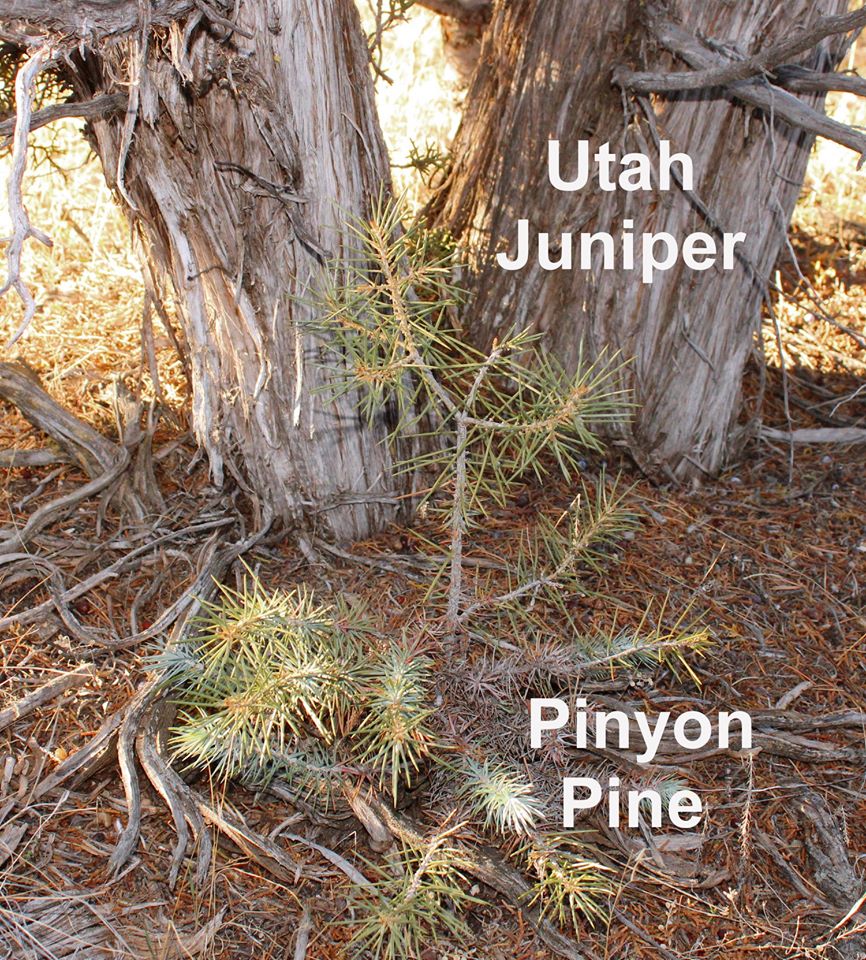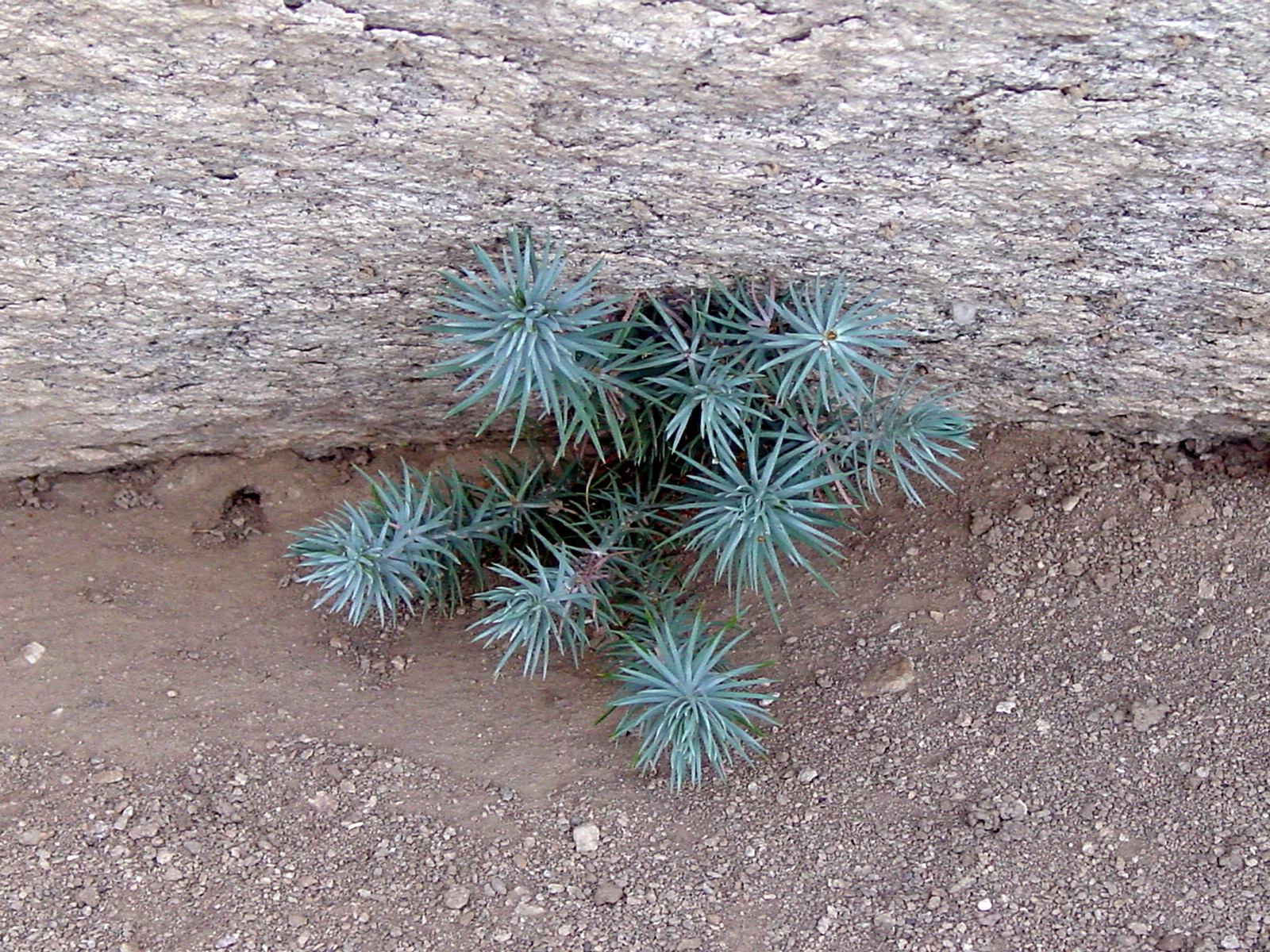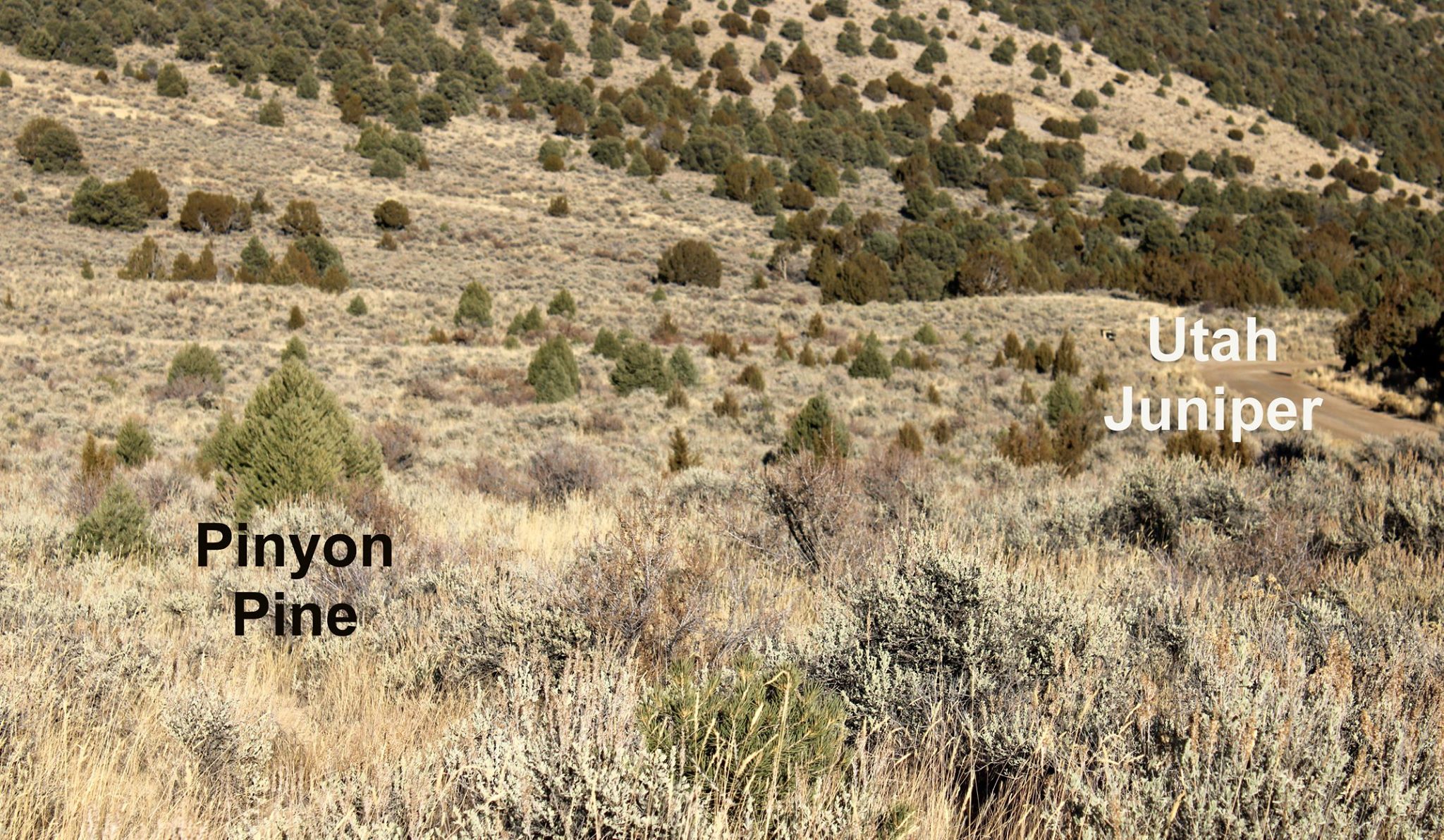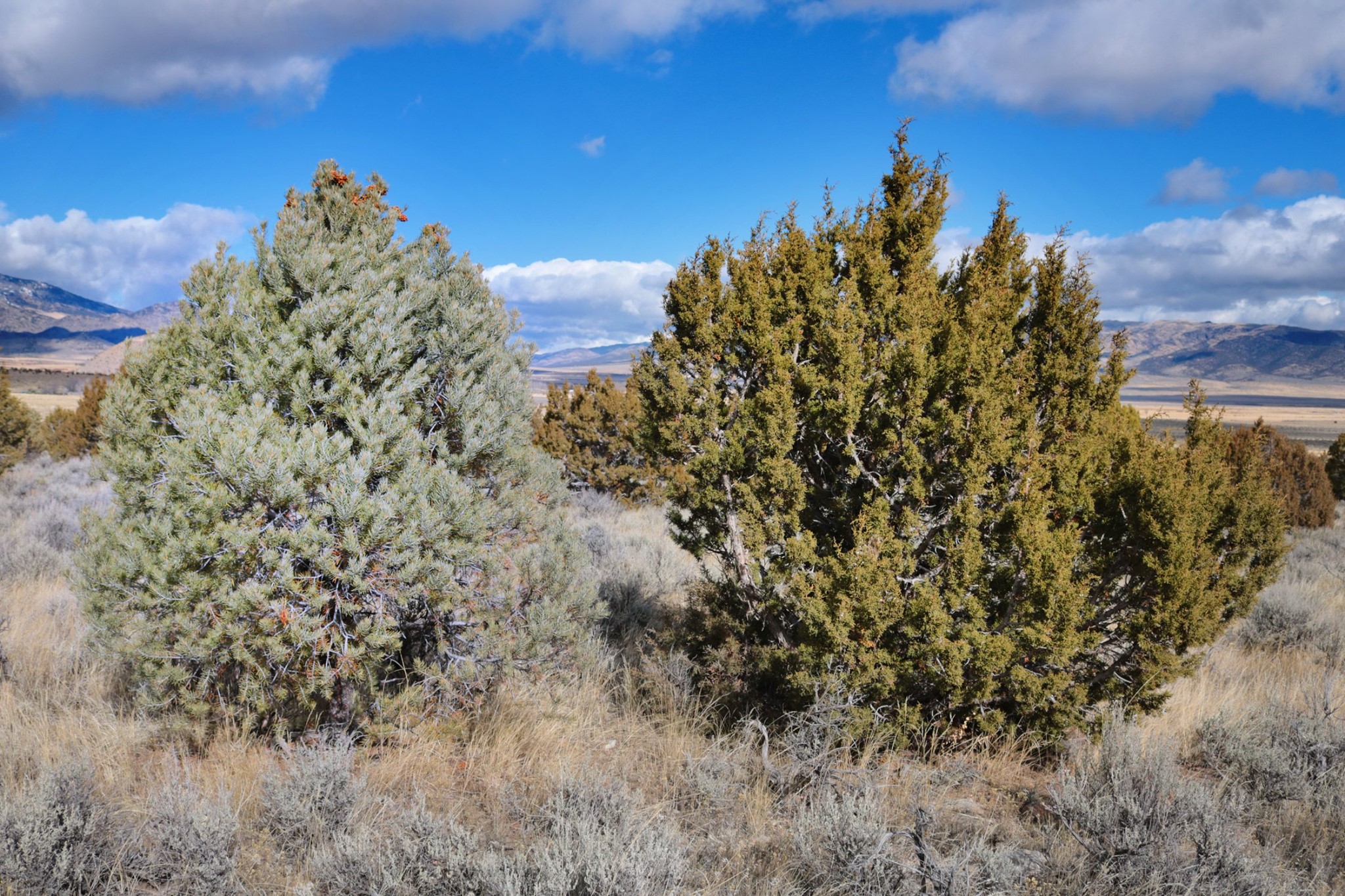
Another question that may help in understanding the plight of the pinyon is this: When did pinyon reach the north boundary of its range? Since pinyon is almost always associated with juniper, one might wonder, did they arrive together? Or did the juniper arrive first and provide a canopy (shade) for the pinyon, or possibly the other way around? Young pinyon are often found at the base of granite outcrops or base of full grown junipers (see photos), and yet, an adult pinyon will grow at least twice as tall as a Utah Juniper. At the east entrance to the Reserve, the relatively level sagebrush flat was once dry-land farmed. Pinyon and juniper were cut and grain was sown over a century ago. When farming ceased, sheep and cattle grazed the land. However since grazing was discontinued at this location about 35 years ago, both pinyon and juniper are returning. Their sprouting and growth are occurring at the same pace – and neither is growing under the protection of the other. In fact, pinyon is reestablishing the open ground at 20 to 1 over juniper! How natural is the composition of the pinyon-juniper woodlands? For at least 150 years, juniper has been cut for fence posts and the pinyon cut for fuel. Almost all of the woodlands we see today are second growth. One recent scientific study includes repeat photography comparing an 1868 view of City of Rocks with the same scene in 2005. Guess which one shows a much more dense forest? Surprisingly it is the 2005!



|
November 16, 2019
|
Last updated: February 13, 2020
